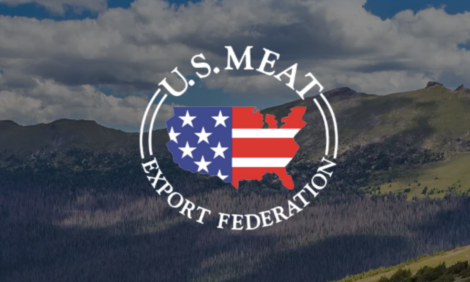



Breakthrough Discovery Signals New Hope In The Battle Against Livestock Parasites
BELGIUM - At last week's World Association for the Advancement of Veterinary Parasitology (WAAVP) Congress, Novartis Animal Health presented promising data on what is potentially the first new livestock anthelmintic class in 25 years, offering renewed hope for farmers struggling with the devastating economic effects of parasitic worms in livestock.The new class of parasiticides, known as Amino-Acetonitrile Derivatives (AADs), have a potentially novel mode of action which has shown promising results against all sheep and cattle gastro-intestinal nematodes, including those resistant to existing treatments. While further testing is required, early in vivo research suggests a kill rate of greater than 95 percent in key economically-important nematodes.*
The new class has already been recognized by many experts as a potentially significant step forward, with the potential to significantly improve parasite management in livestock.
"Anthelmintic resistance is recognized as an increasing problem globally, as existing treatments become less effective and potentially threaten the viability of livestock farming," said Dr. Ronald Kaminsky, the Novartis parasitologist presenting the data at WAAVP.
Livestock farming is already under significant pressure from changes in global farming patterns and financial pressures. For many farmers, issues with anthelmintic resistance may prove to be the final straw.
Dr. Frank Jackson of the Moredun Institute in Penicuik, UK, spoke of the impact of nematodes in livestock. "Gastro-intestinal nematodes in sheep have been estimated to cost the Australian sheep industry approximately US$2.85 billion/€2 billion/£1.4 billion** per year globally. The situation may be even worse in cattle, where estimates of the global costs of gastro-intestinal parasitism vary from nearly US$1.5 billion** annually to more than US$55 billion annually.† As we are seeing more reports of resistance every year, this situation is likely to get much worse, making it even harder for farmers to continue to farm profitably."
Other experts stressed the need for new treatments for this problem. According to Professor Dr. Jozef Vercruysse from the Faculty of Veterinary Medicine of the Universiteit Gent, Ghent, Belgium, "This new class sounds very promising, and could prove to be a real lifeline for those farmers experiencing problems with resistant worms."
As with existing products, any new treatments should be used as part of a holistic parasite control program in order to maximize their benefit and reduce the risk of developing resistance.
Dr. Peter Wells, Head of Global Research & Development for the Animal Health business of Novartis spoke of the company's reaction to the new class. "Novartis Animal Health is committed to developing the best products to meet the needs of our customers, and we are all very proud to see our world-class research and development centers successfully progressing such a potentially major breakthrough for the treatment of livestock. Field trials on the AAD class remain ongoing and at such time as they are successfully completed we look forward to bringing the first of the AADs to market as quickly as possible, subject to regulatory approval."
Edited highlights of the presentation given by Dr. Kaminsky at WAAVP can be viewed for the next 30 days by clicking on the Podcast graphic above.
**Sackett D, Holmes P, Abbott K, et al. Assessing the economic cost of endemic disease on the profitability of Australian beef cattle and sheep producers. Meat & Livestock Australia Ltd, 2006.
†Costs based on estimate of costs in Australia from Sackett D et al, extrapolated on a per head basis utilizing FAO livestock estimates
TheCattleSite News Desk


